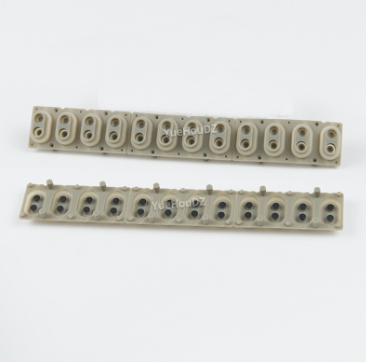When discussing the electrical properties of various materials, silicone products often come up as a topic of interest, especially in relation to their conductive capabilities. Silicone, a polymorphic material known for its resilience and flexibility, has found widespread application in various industries, ranging from medical devices to aerospace engineering.
The core question we explore here is: Is dry silicone conductive? To address this, we must delve into the composition and molecular structure of silicone itself. Silicone, chemically known as polysiloxane, is composed of silicon, carbon, hydrogen, and oxygen. These elements are arranged in a backbone of Si-O-Si bonds, creating a lattice that is inherently resistant to the flow of electrical current.
In its pure form, silicone exhibits excellent electrical insulation properties. This characteristic makes it an ideal choice for insulating wires, sealing electronic enclosures, and providing dielectric protection in a multitude of applications. Its high dielectric strength means that it can withstand strong electric fields without breaking down, making it a reliable insulator in high-voltage environments.
However, the electrical properties of silicone can be altered through the introduction of various additives. For instance, certain fillers can be mixed into the silicone to enhance its thermal conductivity without significantly affecting its electrical insulation properties. Conversely, incorporating conductive materials such as metal oxides or carbon black can transform silicone from an insulator to a conductor.

These modifications allow for the creation of conductive Silicone Products that can be used for static dissipation, electromagnetic shielding, and even as conductive adhesives. Such products are integral in the design of sensitive electronic components, where controlling static electricity and electromagnetic interference is crucial.
The versatility of silicone is also reflected in its thermal properties. While we have established that dry silicone is typically non-conductive electrically, it is quite effective at conducting heat. This thermal conductivity is particularly valuable in applications requiring both electrical insulation and heat dissipation, such as in electronic heat sinks and thermal pads.
The non-conductive nature of silicone also contributes to its chemical stability. Silicone does not readily react with most chemicals, making it an ideal sealant in harsh environments. Its ability to withstand extreme temperatures, both high and low, further enhances its applicability in scenarios where thermal and electrical stability is paramount.
In the realm of consumer products, silicone’s non-conductivity ensures safety in kitchenware, wearable technology, and various household items. It’s this safety aspect, coupled with its durability, that has led to the proliferation of silicone-based products in day-to-day life.
Moreover, the customization of silicone’s electrical properties extends to its optical characteristics as well. Silicone can be formulated to be transparent, translucent, or opaque, depending on the intended application. This adaptability, along with its non-conductive nature, has paved the way for silicone to be used in light-emitting diode (LED) technology and in the lenses of various optical devices.
Environmental resistance also plays a key role in the selection of materials for outdoor applications. Silicone’s resistance to UV light, ozone, and weathering further cements its status as a non-conductive material that can endure the rigors of outdoor exposure without degradation of its electrical insulating properties.
In conclusion, while dry silicone is not conductive, it presents a unique canvas that can be modified to suit a wide array of electrical applications. From its role as a reliable insulator in its unadulterated form to its potential as a conductor when altered, silicone’s versatility is unmatched. Its ability to maintain non-conductivity under various conditions makes it a staple in industries that prioritize safety, longevity, and performance.